Horace Walpole acquired Strawberry Hill in 1747 and over the next 40 years he transformed it into one of the most famous examples of Gothic Revival, filling it with an impressive collection of artworks – ranging from pictures, by artists such as Van Dyck and Holbein, to objets d’art of every period and style. By the late 1750s the villa had become one of the most popular destinations for the fashionable, who were eager to see the eclectic interiors created by a man who was not only one of the most prolific writers of the time, but also one of the fathers of modern British art history.
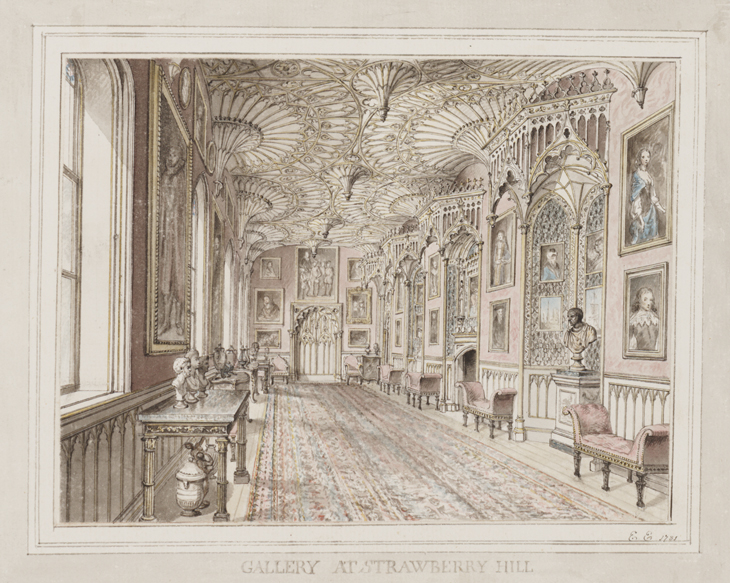
The Gallery at Strawberry Hill (c. 1781), Edward Edwards. Lewis Walpole Library, Yale University
Walpole wrote assiduously about Strawberry Hill and its collection (in two editions of A Description of the Villa of Horace Walpole, 1774 and 1784), haunted by the fear that one day the collection and house would be separated. In 1842, the collection was finally dispersed at one of the most famous sales of the century and Walpole’s treasures left the house, seemingly for good.
Thanks to the restoration of the villa in 2010–15 and provenance research conducted over the past four years to trace Walpole’s original collection, the exhibition ‘Lost Treasures of Strawberry Hill: Masterpieces from Horace Walpole’s Collection’ finally reunites the house and its contents, offering a once-in-a-lifetime opportunity to admire Strawberry Hill in its entirety. A complex exhibition involving more than 49 lenders, including a significant number of private collectors, its principal aim is to display Walpole’s pieces in their original settings to create a deeper understanding of the context and processes of Walpole’s collecting.
Scrolling through the list of more than 150 works of art lent to the exhibition, it is evident that although Walpole has been traditionally identified with the creation of the Gothic Revival and by his taste for antiquarian oddities, such as Dr Dee’s magical mirror (British Museum) or the hair of Mary Tudor (Earl of Derby’s collection), his collection was much richer and far more diverse.
The variety of Walpole’s collection helps us to better understand the genesis of his taste and where his ‘invention’ of the neo-gothic originated. In the introduction to his Description of the Villa (1774), Walpole adapts Alexander Pope’s phrase ‘A Gothic Vatican of Greece and Rome’ to describe the many aspects of his collection and its display. Considered in the context of Walpole’s acquisition of classical antiquities during and after the Grand Tour, this characterisation appears very accurate. Classical antiquities were disseminated throughout Strawberry Hill, an area of research which has been largely overlooked.
Among these antiquities, the colossal marble Roman eagle (lent by the Earl of Wemyss and March, Gosford House, East Lothian), which had reportedly come to light in Rome around 1742 in the Boccapaduli family’s gardens not far from the Baths of Caracalla, was one of Walpole’s favourite objects and is arguably one of the highlights of the exhibition. The statue dates from the first century AD and presumably originally accompanied a statue of Zeus, an emperor or possibly Ganymede. While there are many representations of eagles in reliefs or on coins and medals, statues of Roman eagles in bronze or marble are quite rare. Only a few exist, in Rome, Madrid, London and Karlsruhe; among these, Walpole’s, together with the marble eagle kept at the Vatican museums, is one of the best examples from an artistic point of view.
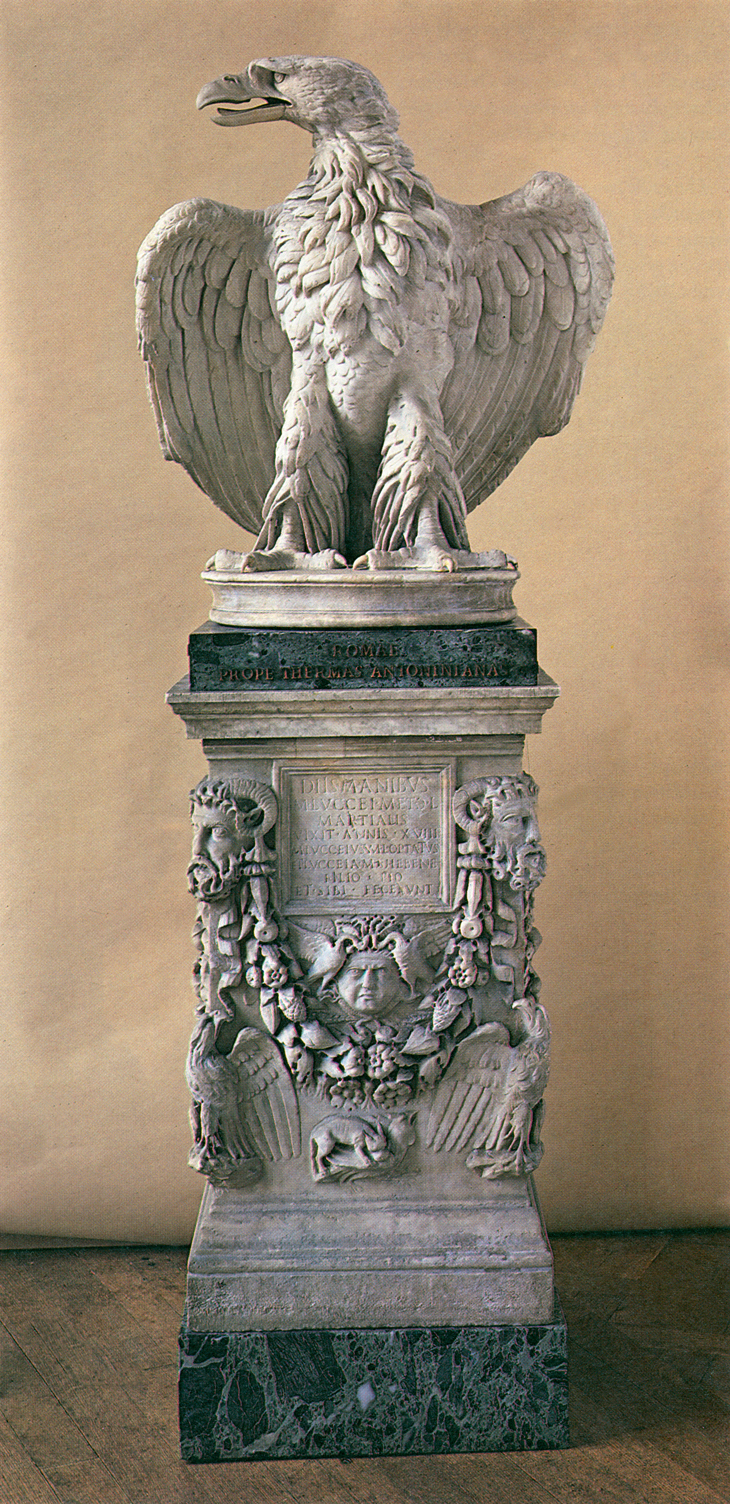
Eagle on an altar base (1st century), Roman. Early of Wemyss and March, Gosford House, East Lothian.
Initially reluctant and preoccupied with the cost of this monumental sculpture, Walpole decided to purchase the imposing bird and its pedestal (an inscribed marble cinerary altar) for 100 zecchini thanks to the mediation of Cardinal Alessandro Albani, and the insistence of his friends John Chute and Horace Mann, the British envoy in Florence.
The eagle eventually arrived in London two years after its acquisition, in 1747. In a letter to Mann dated 26 June that year, Walpole wrote: ‘It is a glorious fowl! […] There never was so much spirit and fire preserved, with so much labour and finishing.’ Many years later, in 1791, a visitor to the house broke the eagle’s beak and, outrageously, took the fragment away. Disappointment does not begin to describe Walpole’s reaction; the sculptor Anne Damer, one of Walpole’s protégés, was tasked with producing a new beak. It is interesting to note that when in 1756–57 Walpole had his portrait painted by Sir Joshua Reynolds, the most fashionable painter at the time, he decided on a pensive pose; on the table next to his elbow lies a print, commissioned by him, representing the Roman eagle. This tells us something about the image that Walpole himself wanted to transmit to posterity.
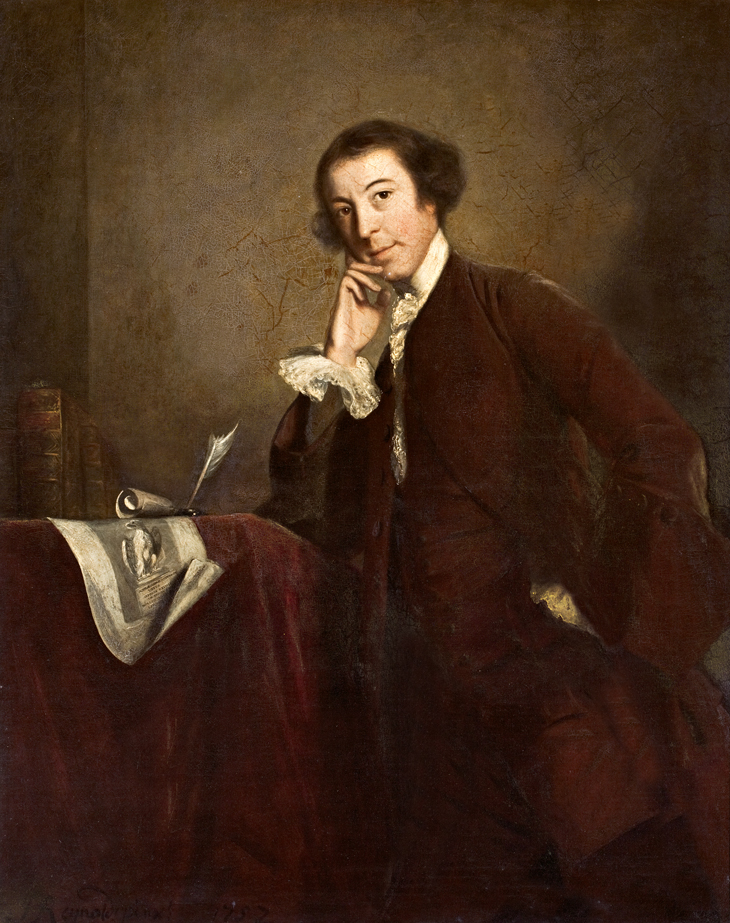
Portrait of Horace Walpole (c. 1756–57), Joshua Reynolds. Marquess of Hertford, Ragley Hall, Warwickshire
Does this betray a contradiction? Not at all. These references to classicism and neo-classical culture do not undermine Walpole’s genuine interest in medieval visual culture and his intention to create a gothic castle. In fact, the opposite is true, since the seriousness of his Gothic Revival emerges from his classical background.
To reproduce the gothic style authentically and accurately at Strawberry Hill, Walpole and his committee, formed of the amateur architect John Chute and the artist Richard Bentley, copied architectural elements from prints of medieval monuments. The committee was using the same cut-and-paste method employed by contemporary architects and designers who were imitating Roman monuments. Similarly, in the course of his Grand Tour and thanks to his acquaintance with a pan-European network of connoisseurs and antiquarians, Walpole acquired a new type of knowledge that looked to visual references as a source of information about past civilisations. If this approach at first applied only to classical Italy, it gradually shifted toward new types of history, local history, and their visual expressions. At Strawberry Hill the juxtaposition of classical sculptures with works of art that illustrate Walpole’s endeavours and preferences as a historian of British visual culture tells a story of continuity rather than rupture.
‘Lost Treasures of Strawberry Hill: Masterpieces from Horace Walpole’s Collection’ is at Strawberry Hill House, Twickenham, from 20 October–24 February 2019.
From the October 2018 issue of Apollo. Preview and subscribe here.
Unlimited access from just $16 every 3 months
Subscribe to get unlimited and exclusive access to the top art stories, interviews and exhibition reviews.


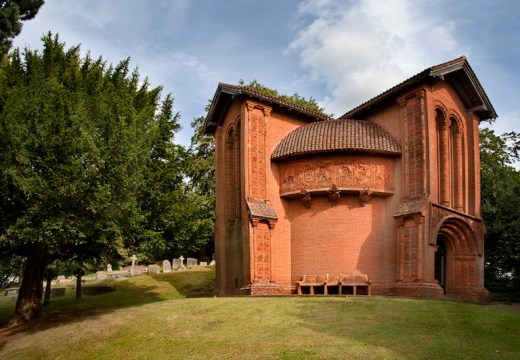
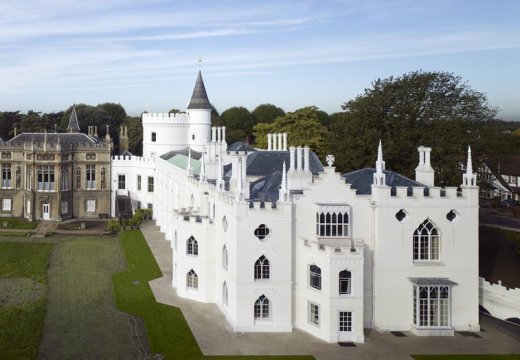
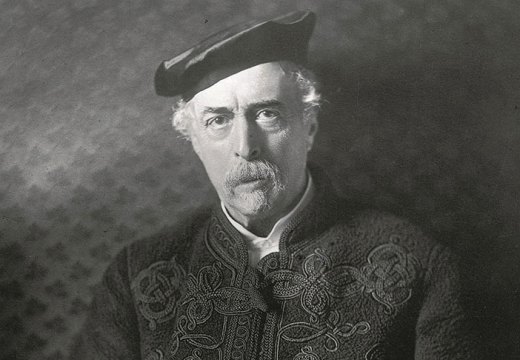









![Masterpiece [Re]discovery 2022. Photo: Ben Fisher Photography, courtesy of Masterpiece London](http://www.apollo-magazine.com/wp-content/uploads/2022/07/MPL2022_4263.jpg)
Has the Fitzwilliam lost the hang of things?